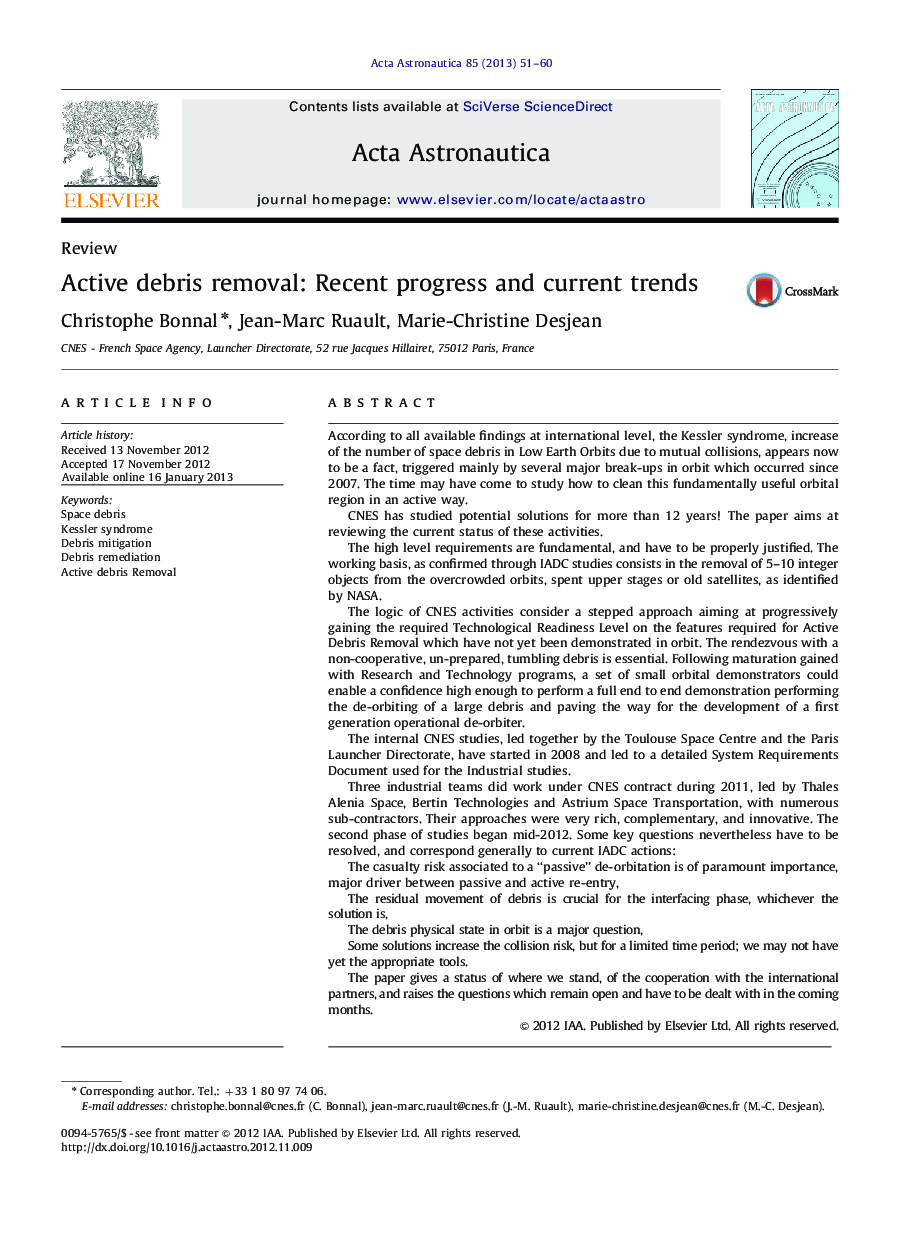| کد مقاله | کد نشریه | سال انتشار | مقاله انگلیسی | نسخه تمام متن |
|---|---|---|---|---|
| 1715031 | 1519965 | 2013 | 10 صفحه PDF | دانلود رایگان |

According to all available findings at international level, the Kessler syndrome, increase of the number of space debris in Low Earth Orbits due to mutual collisions, appears now to be a fact, triggered mainly by several major break-ups in orbit which occurred since 2007. The time may have come to study how to clean this fundamentally useful orbital region in an active way.CNES has studied potential solutions for more than 12 years! The paper aims at reviewing the current status of these activities.The high level requirements are fundamental, and have to be properly justified. The working basis, as confirmed through IADC studies consists in the removal of 5–10 integer objects from the overcrowded orbits, spent upper stages or old satellites, as identified by NASA.The logic of CNES activities consider a stepped approach aiming at progressively gaining the required Technological Readiness Level on the features required for Active Debris Removal which have not yet been demonstrated in orbit. The rendezvous with a non-cooperative, un-prepared, tumbling debris is essential. Following maturation gained with Research and Technology programs, a set of small orbital demonstrators could enable a confidence high enough to perform a full end to end demonstration performing the de-orbiting of a large debris and paving the way for the development of a first generation operational de-orbiter.The internal CNES studies, led together by the Toulouse Space Centre and the Paris Launcher Directorate, have started in 2008 and led to a detailed System Requirements Document used for the Industrial studies.Three industrial teams did work under CNES contract during 2011, led by Thales Alenia Space, Bertin Technologies and Astrium Space Transportation, with numerous sub-contractors. Their approaches were very rich, complementary, and innovative. The second phase of studies began mid-2012. Some key questions nevertheless have to be resolved, and correspond generally to current IADC actions:The casualty risk associated to a “passive” de-orbitation is of paramount importance, major driver between passive and active re-entry,The residual movement of debris is crucial for the interfacing phase, whichever the solution is,The debris physical state in orbit is a major question,Some solutions increase the collision risk, but for a limited time period; we may not have yet the appropriate tools.The paper gives a status of where we stand, of the cooperation with the international partners, and raises the questions which remain open and have to be dealt with in the coming months.
► The paper describes the current status of high level requirements established at international level the other highlights are within character limit.
► The wide variety of potential solutions at system level is then described.
► The five key functions associated to Active Debris Removal are discussed, with associated solutions.
► Concluding statements include some recommendations for future works.
Journal: Acta Astronautica - Volume 85, April–May 2013, Pages 51–60